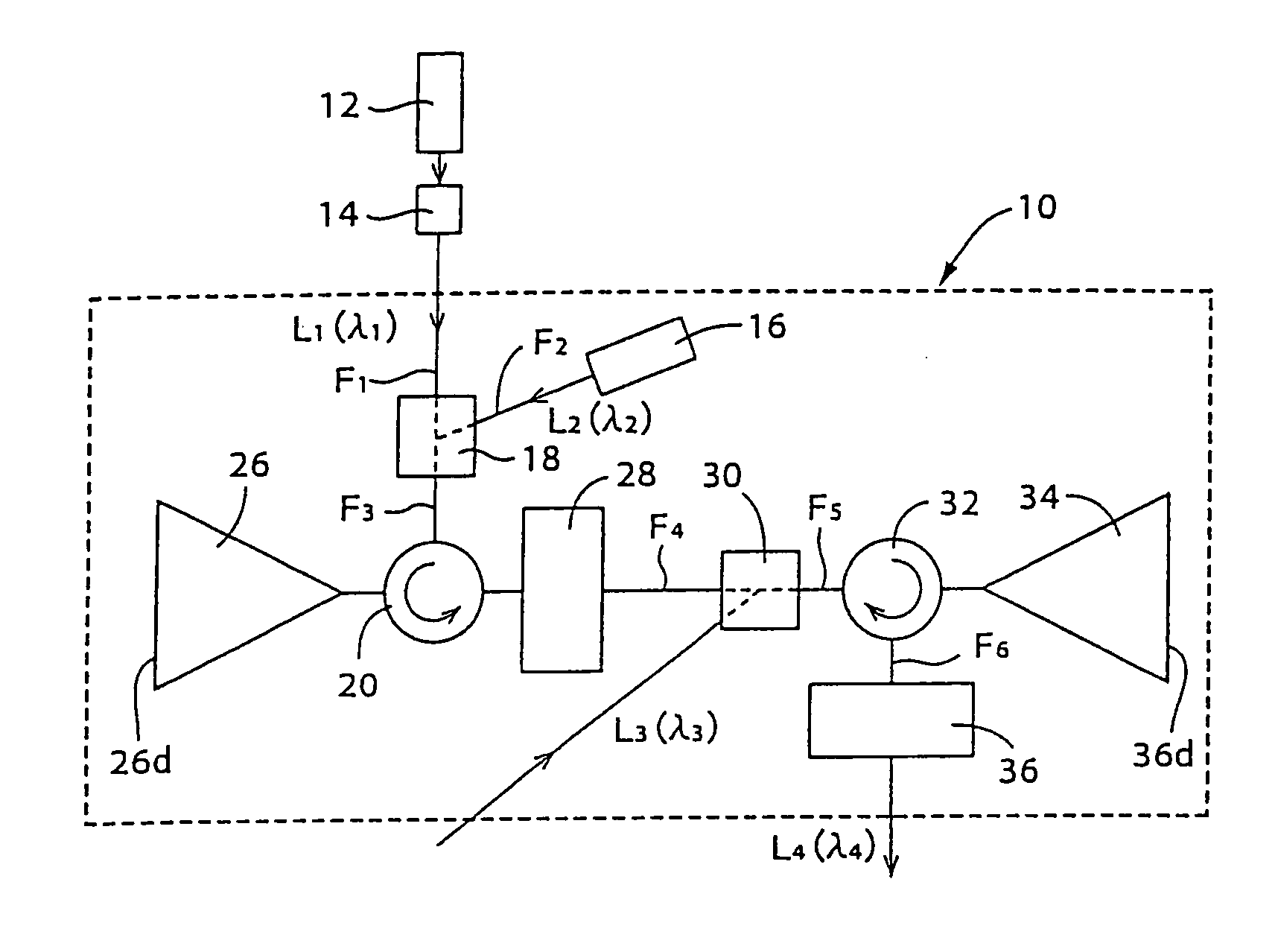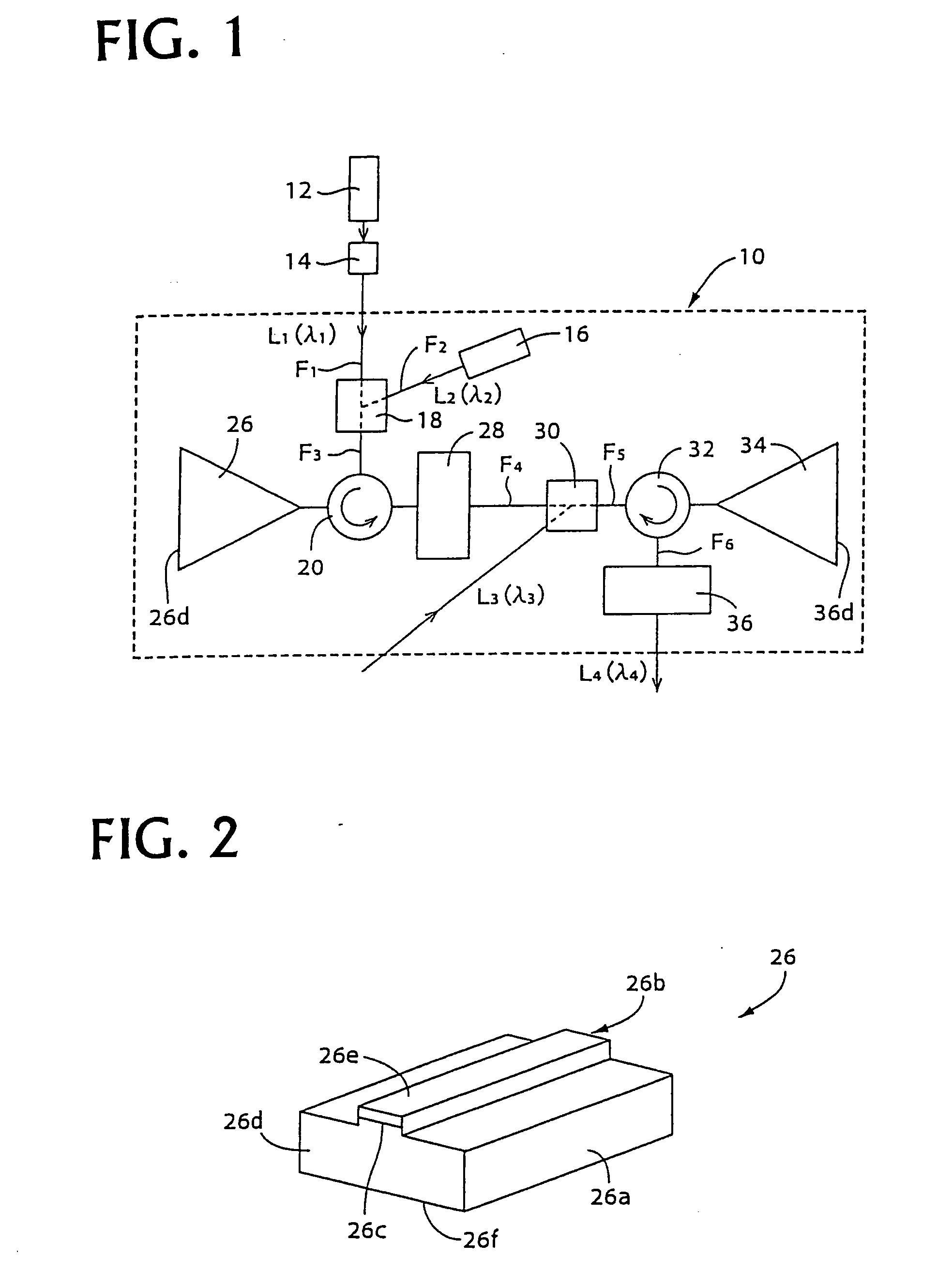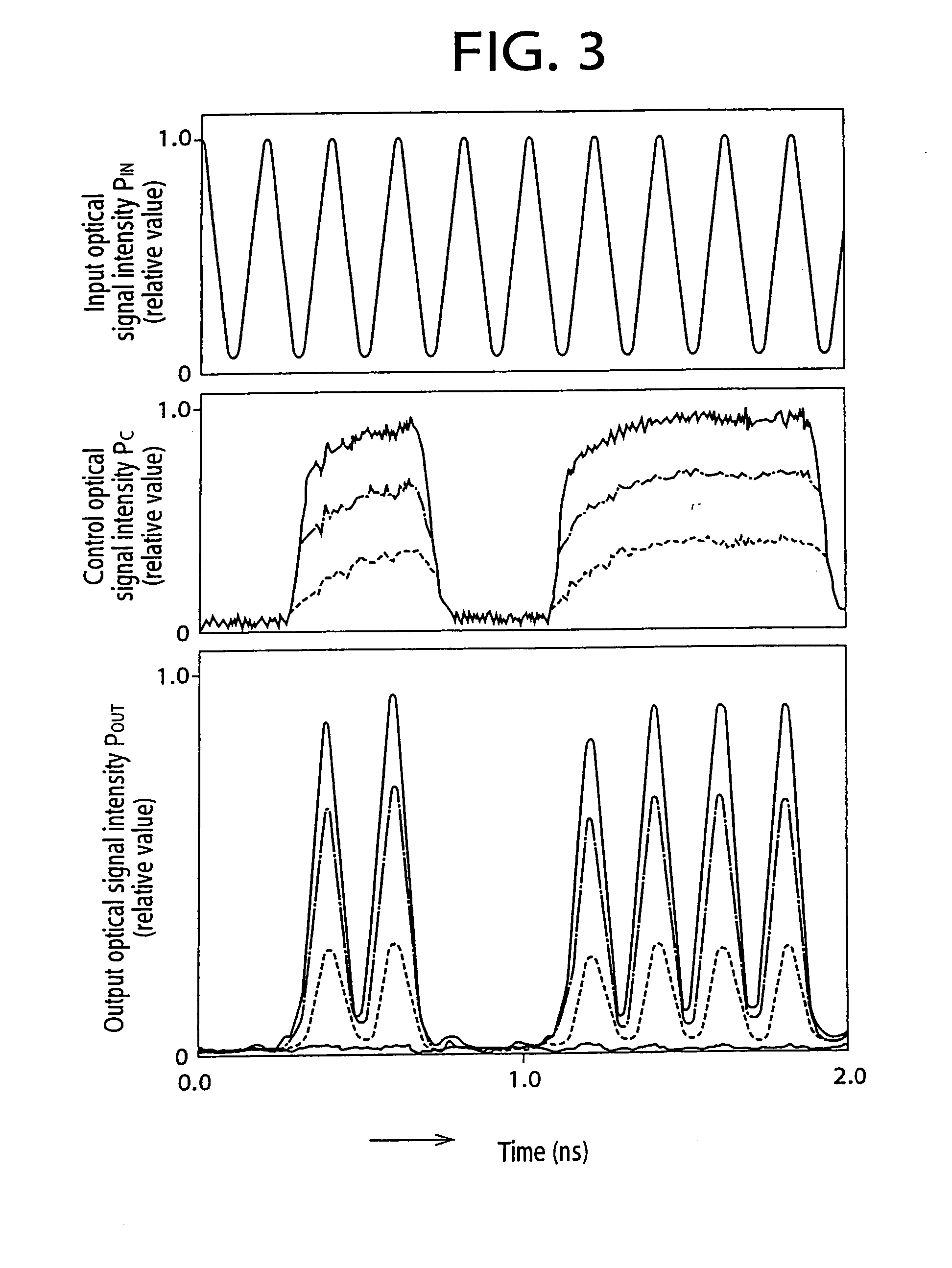Optical signal amplifying triode and optical signal transfer method, optical signal relay device, and optical signal storage device using the same
a technology of optical signal and relay device, which is applied in multiplex communication, pulse technique, instruments, etc., can solve the problems of limited signal processing speed, weak temperature and vibration resistance, and strict setting conditions, so as to reduce the cross-gain modulation response time and reduce the gain of the optical signal. , the effect of reducing or increasing the gain of the optical signal
- Summary
- Abstract
- Description
- Claims
- Application Information
AI Technical Summary
Benefits of technology
Problems solved by technology
Method used
Image
Examples
Embodiment Construction
[0098] Embodiments of this invention shall now be described in detail with reference to the drawings.
[0099]FIG. 1 through FIG. 15 show embodiments related to an optical signal amplifying triode, and FIG. 1 shows an optical signal amplifying triode 10 of one of the embodiments.
[0100] In FIG. 1, a first laser light source 12 outputs a first laser light (first input light) L1 of a first wavelength λ1 of, for example, 1555 nm, and this light is propagated via an optical fiber F1 that is provided with a first optical modulator 14. A second laser light source 16 continuously outputs a second laser light (second input light) L2 of a second wavelength λ2 of, for example, 1548 nm at a fixed intensity, and this light is propagated via a second optical fiber F2. A wavelength variable semiconductor laser is used for example as the first laser light source 12, and a semiconductor laser of a single wavelength is used for example as the second laser light source 16. The first optical modulator 1...
PUM
| Property | Measurement | Unit |
|---|---|---|
| first wavelength λ1 | aaaaa | aaaaa |
| second wavelength λ2 | aaaaa | aaaaa |
| optical path length | aaaaa | aaaaa |
Abstract
Description
Claims
Application Information
 Login to View More
Login to View More - R&D
- Intellectual Property
- Life Sciences
- Materials
- Tech Scout
- Unparalleled Data Quality
- Higher Quality Content
- 60% Fewer Hallucinations
Browse by: Latest US Patents, China's latest patents, Technical Efficacy Thesaurus, Application Domain, Technology Topic, Popular Technical Reports.
© 2025 PatSnap. All rights reserved.Legal|Privacy policy|Modern Slavery Act Transparency Statement|Sitemap|About US| Contact US: help@patsnap.com



